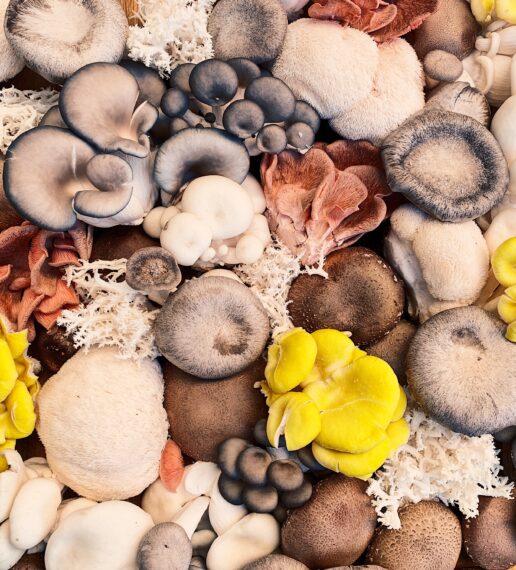Spirulina VS. Chlorella: Everything You Need To Know
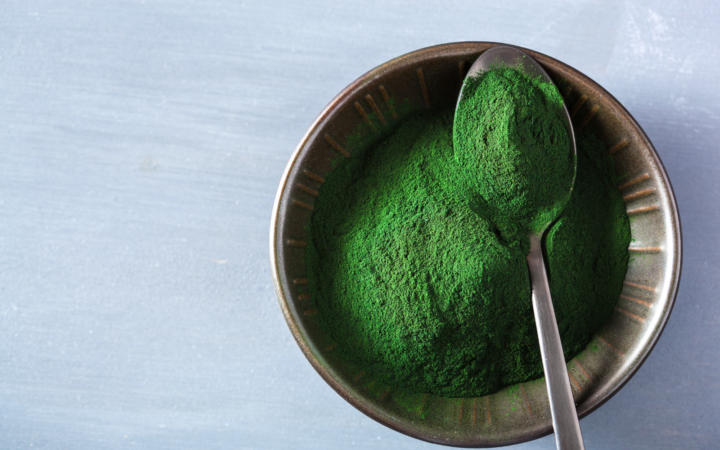
You’re probably familiar with freshwater algae under its street name: pond scum.
Hold on, don’t run away just yet. Believe it or not, freshwater algae are powerful superfoods packed with amino acids, antioxidants, fatty acids, and important vitamins that aren’t easy to find in other food sources.
If you’ve already done some homework about improving your health with algae, you’ve probably noticed you have two main choices: spirulina and chlorella.
Let’s take a look at the benefits, downsides, and side effects of spirulina vs. chlorella side by side so you can figure out which to add to your diet.
What Is Spirulina?
Spirulina is a cyanobacteria that belongs to the blue-green algae family. Don’t worry, it’s safe for human consumption just like the active bacteria found inside your yogurt. This family of single-celled organisms uses photosynthesis, like plants, to convert sunlight into energy.
Gram for gram, spirulina is one of the most nutrient-dense foods on the planet containing 60% protein and plenty of other compounds. The Aztecs realized its power and took advantage of the algae’s many benefits.
According to the USDA, one tablespoon of spirulina contains
- 4.02g protein
- 1.67g carbs
- 2mg iron, 11% of your recommended daily amount (RDA)
- 14mg magnesium
- 95mg potassium
- 1.8mcg vitamin K
- 11% of your RDA of vitamin B1
- 15% of your RDA of vitamin B2
- 4% of your RDA of vitamin B3
- Omega-6 and omega-3 fatty acids
What about B12? Unfortunately, although many believe spirulina contains the elusive vitamin B12, this form of B12 is ineffective in humans.
One interesting thing to note is that Spirulina is notorious for growing in difficult environments – even in space.
But you don’t have to go to space to get Spirulina- you can find it online and in health stores in capsules, tablets, or powders. Many people like to add spirulina powders to their smoothies or healthy baked goods.
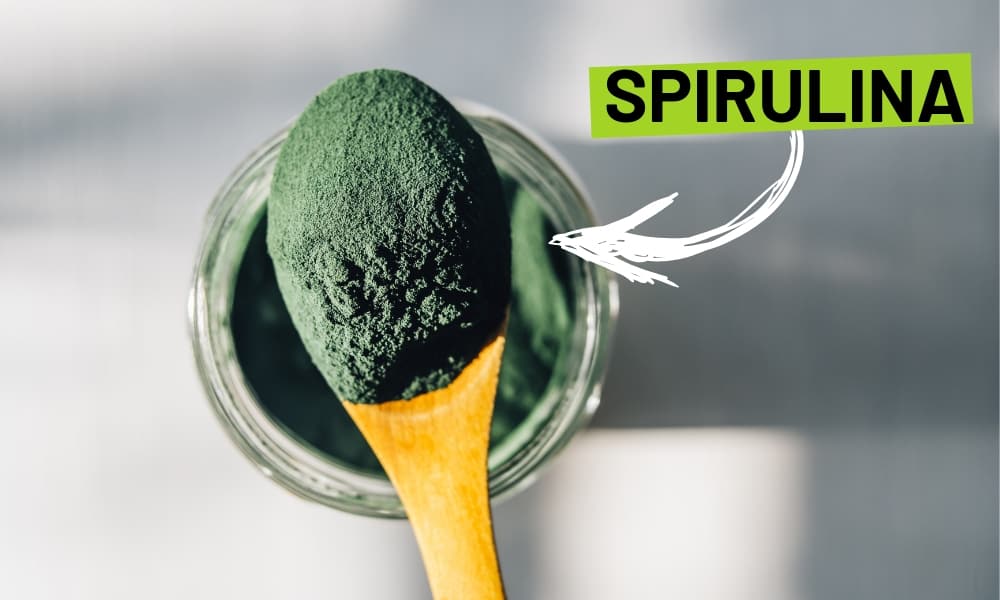
The Top Health Benefits of Spirulina
Consuming spirulina provides a broad range of benefits with minimal side effects.
1. Anti-inflammatory
Spirulina is packed with antioxidants that help defend the body against free radical damage and oxidative stress. Many of the algae’s anti-inflammatory properties come from the essential amino acid gamma linolenic acid and phycocyanin, which gives spirulina its bright blue-green hue. (1)
2. Balances Cholesterol Levels
Many studies have found that spirulina in moderate doses of about eight grams per day is beneficial for protecting the heart against disease.
The antioxidants in spirulina lower LDL and triglyceride levels (bad cholesterol) while increasing HDL (good cholesterol). Not only that, but spirulina prevents LDL oxidization, a major precursor to heart disease. (2)
3. High In Complete Protein
Four grams of protein might not seem like much, but when it’s contained inside a small serving of seven grams, that’s huge. To top it off, the type of protein found in spirulina is the same quality of what you’d find in an egg because it also contains essential amino acids.
4. Helps Fight Anemia
Spirulina is one of nature’s richest sources of vitamin K which is essential for supporting healthy blood clotting. One study has also found that spirulina increased red blood cell levels in people suffering from anemia. (3)
5. Detoxifies The Body
Due to microcystins, which absorb heavy metals, many believe that spirulina can help detoxify the body. A 2006 study found that spirulina and zinc together may help remove arsenic from the body. Arsenic poisoning is notoriously difficult to treat. (4)
Potential Spirulina Downsides
Let’s be frank: many people don’t like the smell and taste of spirulina because it tends to mimic pond water. Reputable brands selling high-quality spirulina are less likely to have this issue.
However, there’s another reason you should only purchase the highest quality spirulina: potential for heavy metal contamination. Microcystins in the blue-green algae may absorb heavy metals and contaminate the spirulina.
By purchasing spirulina from a trusted source that runs regular tests, you can help make sure your spirulina was grown in healthy water free from heavy metals.
What Is Chlorella?
Like spirulina, chlorella is an alga packed with health benefits thanks to its high concentration of vital nutrients. When it comes to spirulina vs. chlorella, chlorella slightly differs from spirulina in that it’s green algae rather than blue-green algae.
Let’s take a look at the hefty nutrient profile of chlorella.
Like spirulina, 7g of chlorella has about 4g of complete protein and a full range of essential amino acids.
- Up to 40% of your RDA of iron
- Omega-3 fatty acids
- Vitamin K
- Antioxidants
- Vitamin B12
- Magnesium
- Zinc
- Calcium
- Folic acid
- And many other minerals
During the post-WWII baby boom, startled researchers began studying chlorella as a tool to help combat world hunger as the population rose.
Just like spirulina, you can find chlorella in capsules, tablets, and powders.
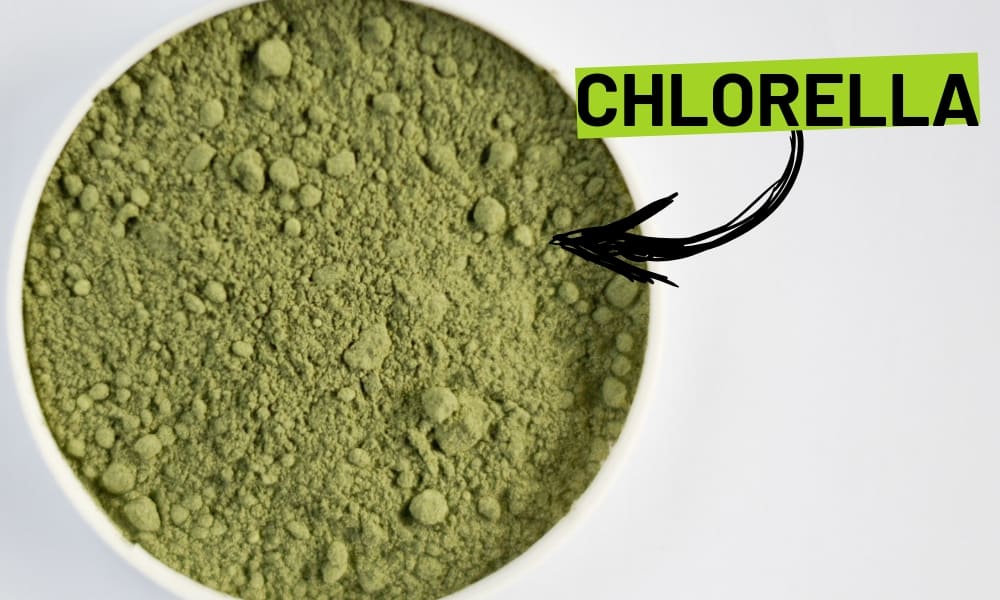
The Top Health Benefits of Chlorella
Spirulina vs. chlorella: which alga has the best benefits?
Many benefits between the two algae overlap such as cholesterol, blood sugar, and antioxidant support.
Below, we take a look at the benefits of chlorella that stand out from spirulina.
1. Immune System Support
Researchers believe that chlorella activates the immune system. One study found that participants produced more antibodies for fighting infections when taking chlorella. Chlorella also contains powerful antioxidants to support the immune system and defend against free radical damage. (4)
2. Detoxification
Many people use spirulina for detoxification, but the science behind this benefit isn’t widely documented. Chlorella, on the other hand, has plenty of studies backing its ability to bind to heavy metals inside the body and remove them entirely. (5) This makes chlorella especially beneficial for anyone who works in mining, welding, or construction with a high exposure rate.
3. Supports Liver Health
People with non-alcoholic liver disease who take chlorella generally improve their markers on follow-up tests.
4. Encourages Healthy Eyes
Chlorella also contains compounds to help improve eyesight in compromised people. Lutein and zeaxanthin can defend your eyesight against macular degeneration.
Potential Side Effects
For both of these superfoods, the potential side effects and drug interactions are generally similar, since the algae only slightly differ in their makeup.
- Some people report mild digestive upset when taking green or blue-green algae with symptoms such as gas, bloating, or diarrhea.
- People with light skin may notice sensitivity to sunlight when taking chlorella. Always wear appropriate sunblock regardless.
- These algae can activate the immune system in unique ways. Anyone with an autoimmune condition such as lupus, MS, or rheumatoid arthritis should talk to a doctor before adding algae to their diet.
- Spirulina contains the amino acid phenylalanine so anyone with phenylketonuria who has trouble metabolizing phenylalanine should avoid this alga.
- Before taking spirulina or chlorella, it’s important to consider the possibility of an allergic reaction. Although rare, some people – especially anyone sensitive to mold – may experience an allergic reaction to chlorella.
- Experts believe chlorella is possibly safe for pregnant women but there isn’t enough research to guarantee any safety. When in doubt, talk to your doctor.
- Anyone taking immunosuppressants or any medication for an autoimmune disorder should avoid both chlorella and spirulina due to their effects on the immune system.
- Anyone taking Warfarin should avoid spirulina due to its high vitamin K content which promotes blood clotting.
Chlorella also carries a potential risk for heavy metal exposure because the microcystins absorb metals. You can mitigate this risk or avoid it entirely by purchasing your spirulina from reputable brands that grow their spirulina in clean water and conduct regular tests.
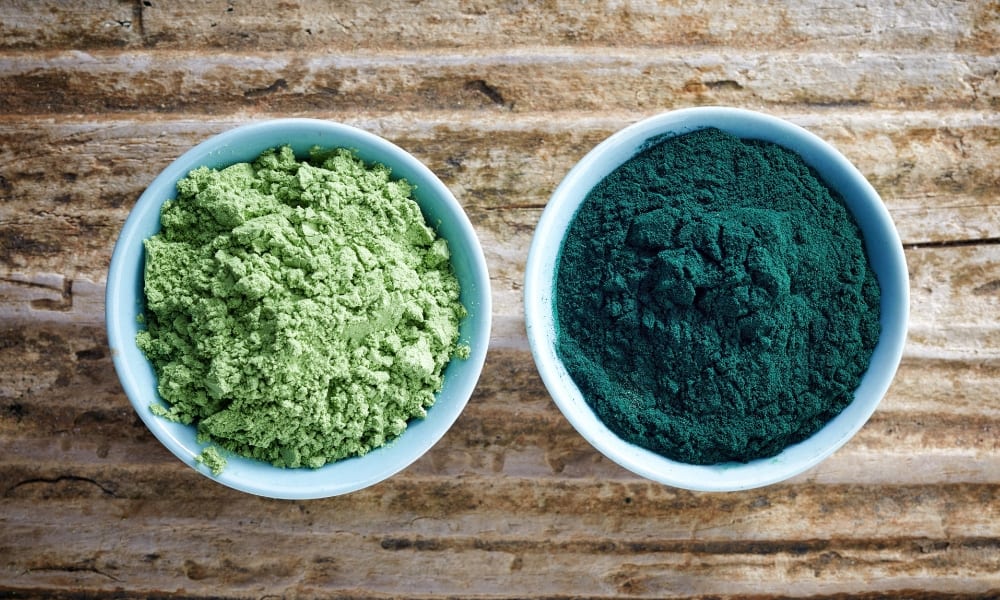
Which Should You Choose?
Although very similar, spirulina is blue-green algae while chlorella is green algae. Spirulina is more well-known in the developed world but chlorella is much older. In general, both algae share similar benefits with a few notable differences mentioned above.
Let’s take a look at some of the key differences between spirulina vs. chlorella so you can make the best choice for your long-term health.
PRO: Chlorella contains more chlorophyll and a substance called chlorella growth factor (CGF) which can boost energy, encourage post-workout muscle recovery, and support healthy aging.
PRO: Chlorella contains vitamin B12 although its bioavailability isn’t widely studied.
CON: The cell walls of chlorella must be “cracked” to make the powerful compounds bioavailable. For this reason, certain varieties of chlorella can only be consumed as capsules or tablets to reap the full range of benefits.
PRO: Spirulina contains more beta carotene, making it especially beneficial for supporting healthy skin, lungs, eyes, and cognitive function.
CON: Spirulina might be better suited to capsules and tablets due to the unpleasant taste. However, you can certainly mask the taste or smell by adding spirulina to smoothies.
Many people add both chlorella and spirulina to their diets without any problems. Both substances are generally very safe in low, moderate, and even high doses of 10g per day.
The Bottom Line
Both spirulina and chlorella are powerful superfoods because they contain some of the most protein, vitamins, amino acids, and other compounds gram-for-gram.
Add a few scoops of high-quality spirulina or chlorella to your smoothies or baked goods to effortlessly incorporate the algae into your daily diet. Spirulina vs. chlorella, whatever you choose, will definitely help improve your overall health.
